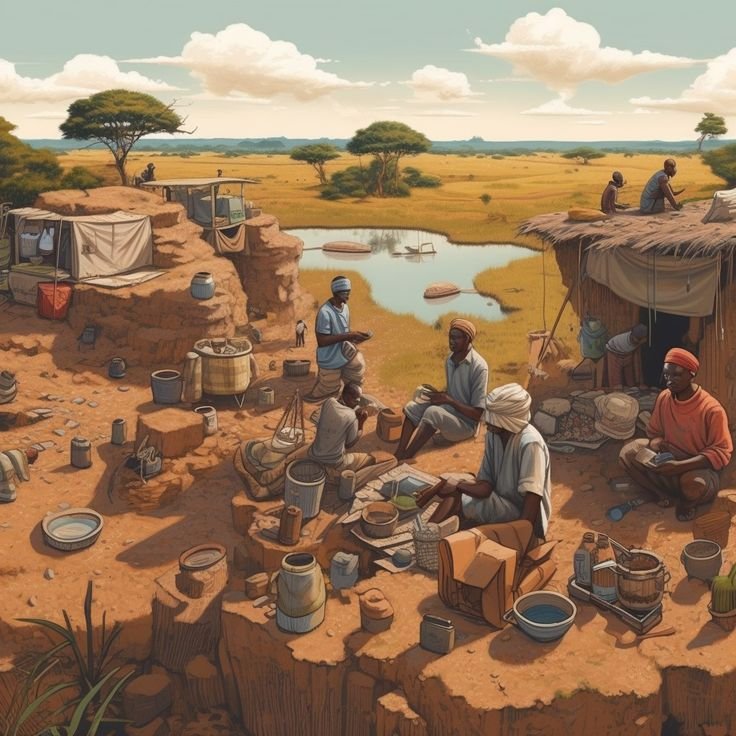The global fashion industry is experiencing a dynamic shift as emerging markets become increasingly significant players. These markets, which include countries and regions with rapidly growing economies, rising middle classes, and increasing consumer spending, present new opportunities for fashion brands looking to expand their reach. Understanding the unique characteristics of these emerging fashion markets is essential for brands aiming to capitalize on their potential.

Overview of Emerging Fashion Markets
Emerging fashion markets refer to countries or regions that have seen substantial economic growth and development, leading to increased consumer spending on fashion and lifestyle products. These markets often exhibit youthful demographics, growing middle-class populations, and a strong appetite for both local and international brands. Some of the most notable emerging fashion markets include:
1. China: As the world’s second-largest economy, China has a rapidly expanding middle class with increasing disposable income. The Chinese fashion market is characterized by a high demand for luxury goods, streetwear, and a growing interest in sustainable and locally made products.
2. India: India’s fashion market is driven by its large and youthful population, cultural diversity, and growing digital connectivity. Traditional wear, fusion fashion, and a rising demand for Western styles are all prominent in the Indian market.
3. Southeast Asia: Countries like Indonesia, Thailand, Vietnam, and the Philippines are experiencing rapid economic growth, leading to a surge in fashion consumption. The region’s young and tech-savvy population is highly engaged in social media and e-commerce, making it a promising market for fashion brands.
4. Africa: With a burgeoning middle class and a youthful population, Africa’s fashion market is gaining global attention. Key markets include Nigeria, South Africa, Kenya, and Egypt, where there is a growing interest in both local designs and international brands.

5. Latin America: Countries like Brazil, Mexico, and Colombia are seeing increased consumer spending on fashion, driven by a rising middle class and growing urbanization. The region’s diverse culture influences a wide range of fashion trends, from streetwear to high fashion.
Key Drivers of Growth in Emerging Fashion Markets
Several factors contribute to the growth of fashion markets in emerging economies:
1. Economic Development
Rapid economic growth in emerging markets has led to increased disposable incomes, particularly among the middle class. As people have more money to spend, they are increasingly looking to express themselves through fashion, driving demand for both local and international brands.
2. Urbanization and Lifestyle Changes
As more people move to cities in search of better opportunities, urbanization drives changes in lifestyle and consumer behavior. Urban consumers are more likely to adopt new fashion trends, seek out diverse styles, and be open to experimenting with their wardrobes.
3. Digital Connectivity
The proliferation of smartphones and internet access has significantly impacted consumer behavior in emerging markets. Digital connectivity allows consumers to discover new fashion trends, shop online, and engage with brands through social media. E-commerce platforms and mobile apps have made it easier for consumers to purchase fashion products, contributing to the growth of online fashion retail.
4. Youth Demographics
Many emerging markets have a young population that is highly engaged with fashion. This demographic is often more open to experimenting with new styles and trends, making them a key target audience for fashion brands. Younger consumers are also more likely to embrace digital platforms for shopping and brand engagement.
5. Influence of Western and Local Cultures
While Western fashion influences are strong in many emerging markets, there is also a growing interest in local and traditional styles. This blend of influences creates unique fashion trends that cater to diverse tastes and preferences. Fashion brands that understand and respect these cultural nuances are more likely to succeed in these markets.

Opportunities in Emerging Fashion Markets
Emerging fashion markets offer numerous opportunities for fashion brands looking to expand globally:
1. Untapped Consumer Base
With large populations and a growing middle class, emerging markets offer a vast untapped consumer base. Fashion brands that enter these markets early can establish a strong foothold and build brand loyalty among consumers.
2. Growing Demand for Affordable Fashion
While there is a market for luxury goods in emerging economies, there is also a significant demand for affordable fashion. Brands that offer high-quality products at reasonable prices can attract a broad audience, particularly among younger consumers who are more price-sensitive.
3. E-commerce Growth
The rise of e-commerce in emerging markets presents a significant opportunity for fashion brands. Online shopping allows brands to reach consumers in remote areas where brick-and-mortar stores may not be feasible. E-commerce platforms also provide valuable data on consumer preferences and behavior, enabling brands to tailor their offerings and marketing strategies.
4. Localization and Cultural Relevance
Emerging markets are characterized by diverse cultures, traditions, and consumer preferences. Fashion brands that localize their products and marketing efforts to align with local tastes and values can resonate more deeply with consumers. This includes adapting designs, colors, and fabrics to reflect cultural aesthetics and incorporating local influencers and celebrities in marketing campaigns.
5. Sustainable and Ethical Fashion
As consumers in emerging markets become more aware of sustainability and ethical issues, there is a growing demand for eco-friendly and ethically produced fashion. Brands that prioritize sustainability and transparency in their supply chains can appeal to socially conscious consumers and differentiate themselves from competitors.

Challenges in Emerging Fashion Markets
While the opportunities are significant, entering emerging fashion markets also comes with challenges:
1. Cultural Differences and Consumer Preferences
Understanding local culture, traditions, and consumer preferences is crucial for success in emerging markets. Fashion brands must navigate cultural nuances and adapt their products and marketing strategies accordingly. Failing to do so can result in misunderstandings, cultural insensitivity, and a lack of resonance with local consumers.



